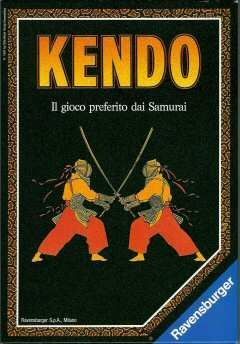Kendo (1976) Board Game
Kendo is a board game that was released in 1976 by designer Keith Budden and published by Otto Maier Verlag. It falls under the categories of Abstract Strategy, Fighting, and Medieval themes. The game is designed for 2 to 4 players, with a recommended age of 10 and up.
Game Components of Kendo
How To Setup Kendo
To set up Kendo, players begin by placing their samurai and prince pieces on designated starting positions on the hex grid. Each player receives a set of movement and action cards. The game board is arranged to depict the path to the central palace, which is the ultimate goal.
Gameplay Mechanics and Game Objective
– Area Control: Players maneuver their samurai to control key hexes on the grid.
– Hex Grid Movement: Pieces move and interact on a hexagonal grid.
– Card Play: Use movement and action cards to influence the game state.
– Conflict Resolution: Dice rolls determine the outcomes of battles between samurai.
Player Experience
Playing Kendo involves a blend of strategic planning and tactical execution. Players must balance the protection of their prince with the need to outmaneuver their opponents. The game requires a mix of short-term and long-term thinking, as players need to adapt to changing conditions on the board.
Pros
Cons
Personal Thoughts on Kendo
Kendo is ideal for fans of strategy and hex-based games who enjoy a challenge. It is best suited for players who appreciate tactical gameplay and are willing to invest time in learning the rules. The game’s thematic focus on samurai warfare adds a unique twist that can enhance the gaming experience for those interested in historical or martial themes. However, it may not be the best choice for casual gamers or those looking for quick, simple games.
We are supported by our audience. When you purchase through links on our site, we may earn an affiliate commission, at no extra cost for you. Learn more.

